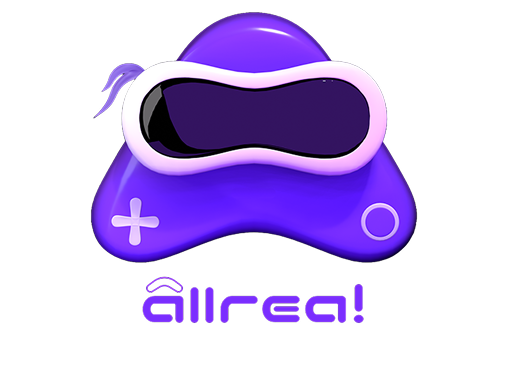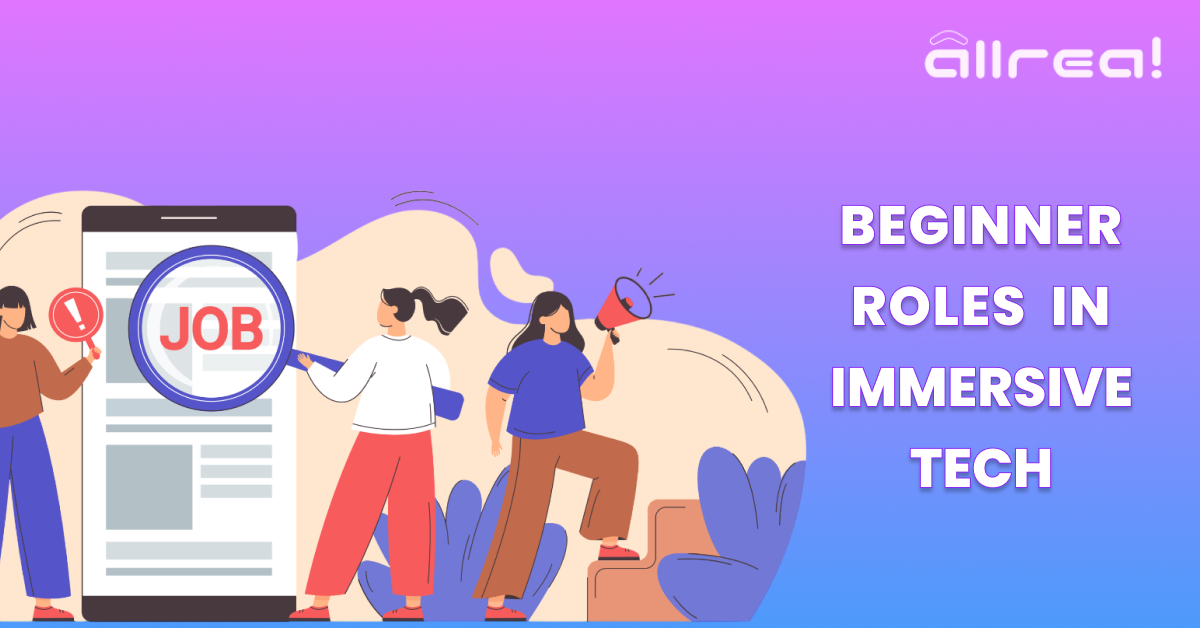Hey Beginner, Thinking of a Career in AR/VR?
You’ve heard about Virtual Reality and Augmented Reality. Maybe you’ve tried a VR headset or played with an Instagram filter. But what if you could actually build the experiences that amaze people?
Guess what—you can.
And you don’t need to be a coding genius or have years of experience. There are real, paid, entry-level AR VR jobs out there, and this guide will walk you through how to get one.
Let’s break it down step by step.
Step 1: Understand the AR/VR Job Landscape
Before diving in, it’s good to know what kind of roles exist. Immersive tech isn’t just for game developers—it’s also for designers, testers, writers, and even marketers.
Here’s Why It’s a Great Industry to Start In:
- It’s new and growing fast—tons of companies are just getting started.
- Learning resources are widely available online, many for free.
- Creative and tech roles exist side-by-side, so there’s something for everyone.
Step 2: Explore Entry-Level AR/VR Job Roles
Here’s a bulletproof list of beginner-friendly jobs you can start exploring today. Each one comes with a salary estimate and basic skill requirements:
Entry-Level AR VR Jobs (with Salary Ranges)
- XR Developer (Unity/Unreal)
Salary: $60,000–$80,000
Learn Unity or Unreal Engine. Know some C# or C++. Build simple VR scenes or AR effects. - 3D Modeler
Salary: $45,000–$70,000
Create 3D assets using Blender or Maya. No code required—just design sense. - AR Filter Creator
Salary: $40,000–$55,000
Build fun filters for Instagram or Snapchat using Lens Studio or Effect House. - VR Tester/QA Analyst
Salary: $40,000–$60,000
Test VR apps for bugs and usability. Attention to detail matters more than coding. - UX/UI Designer for XR
Salary: $55,000–$75,000
Use tools like Figma or Adobe XD to plan immersive interfaces. - Technical Support Specialist (AR/VR Tools)
Salary: $40,000–$60,000
Help users troubleshoot AR/VR products. Strong communication is key. - Immersive Content Writer
Salary: $40,000–$65,000
Write scripts or narratives for VR experiences. Great if you love storytelling. - Junior Game Designer (VR)
Salary: $50,000–$70,000
Help shape game mechanics, levels, and interactions. Ideal for creative thinkers. - AR/VR Marketing Assistant
Salary: $45,000–$60,000
Create content, run campaigns, and demo immersive products. - Virtual Event Coordinator
Salary: $40,000–$55,000
Organize events in virtual spaces like AltspaceVR or Spatial.
Step 3: Build the Skills That Employers Look For
You don’t need to know it all—but having a few core skills can set you apart.
Start With These Beginner-Friendly Tools:
- Unity Engine – Learn to create VR worlds and AR experiences.
- Blender – Build 3D models for games or apps.
- Lens Studio or Effect House – Make social media filters.
- C# or Python – Just the basics to start coding.
- Figma – Design layouts for AR apps and VR interfaces.
Pro Tip: Start learning from YouTube or platforms like Unity Learn and Coursera.
Step 4: Know Where to Look for Jobs
Once you’ve built some skills or mini-projects, it’s time to look for real opportunities.
Best Job Platforms for Entry-Level AR/VR Roles
- LinkedIn Jobs
- Indeed
- Wellfound (formerly AngelList)
- Remote OK – for global remote gigs
- XR Discords + Reddit groups – Search for “AR VR Jobs” or “XR Opportunities”
Set alerts for roles like:
- “AR VR Intern”
- “Junior XR Developer”
- “Entry-Level 3D Artist”
- “AR Creator”
Apply even if you don’t meet 100% of the requirements. Enthusiasm and a solid project can open doors.
Step 5: Stay Ahead with Industry Trends
To thrive in immersive tech, it’s not enough to just land a job—you need to grow with the industry. Technology in AR and VR evolves quickly, and staying updated is one of the most important habits you can develop.
Emerging Trends to Watch in Immersive Tech
- New Headsets & Spatial Devices
Tech giants regularly release cutting-edge hardware, creating new demand for developers, designers, and testers who understand these platforms. - AI + XR Integration
Artificial Intelligence is increasingly used in AR and VR to power smarter avatars, adaptive learning experiences, and dynamic virtual environments. - WebAR & WebVR
Augmented and virtual reality are becoming accessible via browsers, removing the need for apps and expanding reach for creators. - Immersive Learning & Healthcare Applications
Education, therapy, and medical training are embracing VR for simulations and remote learning—opening doors for roles in instructional design, 3D modeling, and virtual facilitation.
How to Stay Informed
- Subscribe to AR/VR Newsletters – Try ARPost, Road to VR, and UploadVR.
- Follow Thought Leaders – Connect with XR professionals on LinkedIn and Twitter.
- Join Online Communities – Reddit, Discord servers, and XR Slack groups are full of real-time insights and opportunities.
When you stay curious and current, you don’t just follow the industry—you grow with it.
Step 6: Apply With Confidence
Don’t overthink your first application—just get started. Here’s how to stand out:
Quick Checklist Before You Apply
- Build at least one small project (even a basic AR filter).
- Create a simple portfolio site or GitHub to show your work.
- Write a short cover letter—tell them why you love immersive tech.
- Keep your resume simple, clear, and focused on skills and tools.
You’re not just applying for a job—you’re showing them what you’re capable of.
Final Thoughts: Start Small, Stay Consistent
If you’re serious about a career in immersive tech, this is your moment. There’s never been a better time to explore entry level AR VR jobs.
You don’t need to be perfect. You just need to start.
Here’s Your First Action Step:
Pick one job title from the list above.
Find one course or tutorial that supports it.
Start learning and building today.
You’ll be amazed how quickly momentum builds.
FAQs
1. Do I need a computer science degree to get an AR/VR job?
Not at all. Many roles are skill-based. A portfolio with real projects can impress more than a degree.
2. How do I get experience with no job yet?
Start building personal projects, join hackathons, or contribute to open-source XR projects.
3. Can I get remote work in AR/VR?
Yes! Many companies are hiring remote developers, designers, and creators for immersive tech.
4. How long will it take to get job-ready?
With focused learning, a strong portfolio, and consistent practice, you can be job-ready in 3–6 months.

